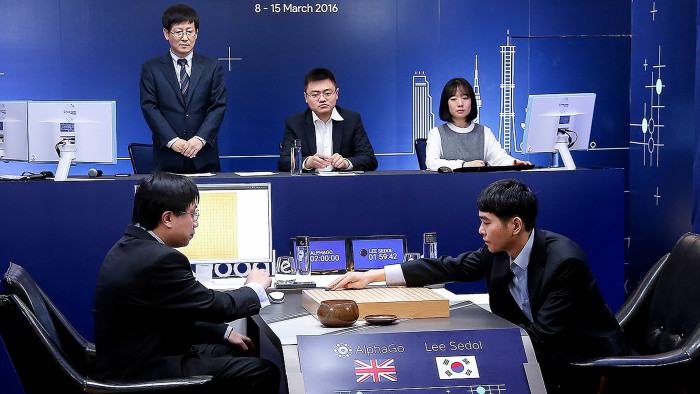South Korea struggles to make its R&D work

Roula Khalaf, Editor of the FT, selects her favourite stories in this weekly newsletter.
When grandmaster Lee Se-dol was beaten 4-1 at the Chinese board game go by Google’s artificial intelligence program AlphaGo last year, his compatriots in South Korea were not merely disappointed but gripped by fear. In particular, they felt a profound anxiety that the country might be falling behind in the next big trend.
The high-profile computer match made AI and deep learning into buzzwords, prompting the government and business to announce plans to invest billions of dollars to try to catch up with the likes of Google’s DeepMind.
The phenomenon highlighted South Korea’s obsession with developing technology, which has made it the world’s 11th-largest economy in just half a century. Economists say the country’s emphasis on research and development has bolstered its global competitiveness.
The country spends hugely on R&D. Led by technology companies such as Samsung and LG, it invests more than most advanced economies. It was narrowly beaten by Israel to the title of top R&D spender, devoting 4.23 per cent of gross domestic product in 2015, compared with Israel’s 4.25 per cent, according to OECD data.
South Korea still leads in “basic” research — trying to obtain knowledge without a clear application — which accounted for 36 per cent of its public R&D budget in 2015.
“It is a resource-poor country, so there is a national consensus on the importance of technology to drive industrial development,” says Lee Min-hyung, a senior research fellow at the Science and Technology Policy Institute in Seoul.
Investment has been driven mainly by the private sector, although public R&D spending is high. Almost three-quarters of South Korea’s R&D is business-led; nearly 90 per cent of that is invested in manufacturing, with the focus tilted towards applied research for industrial competitiveness. Industrial R&D also favours technology industries such as electronics.

“Most big Korean companies have been compelled . . . to invest heavily in R&D to secure export competitiveness,” says Professor Chung Sungchul, who teaches science and technology policy at the University of Science and Technology in Daejeon.
Traditionally, the South Korean government has committed to research for economic development, plying chaebol (family-run conglomerates) with cheap loans and tax incentives. This has allowed chaebol to engage in risky and expensive R&D projects.
The government has contributed to high-tech industries by investing in IT infrastructure. The strategy has helped create companies of global renown, such as Samsung and LG, and made the country a world leader in memory chips, displays and smartphones.
An R&D scene dominated by conglomerates has come at a price, however. Industry watchers bemoan that the country lacks “blue sky innovation”, especially in software and services, as R&D activities are concentrated on big companies and state-run research institutes. There are too few upstarts with innovative ideas as the chaebol’s dominance hinders new entrants.
“There are not many [small and medium-sized enterprises] doing their own R&D, [which is] heavily reliant on chaebol technology,” says Lee Byungtae, a professor of information systems at the Korea Advanced Institute of Science and Technology in Seoul. “This chaebol-led R&D model, focused on manufacturing, cannot prepare us for the fourth industrial revolution,” he says.
The country’s focus on industrial research has led South Korean companies to excel by quickly adopting technologies developed by others, but with a lack of originality. Some industry commentators say the “fast follower” strategy has reached its limit as China catches up in key industries. “Now, we need to create something new,” says Prof Chung.
Many researchers also worry that public investment has been inefficient because of bureaucracy, with few South Korean technology patents commercialised and scientific publications rarely receiving international recognition.
Raising South Korea’s R&D productivity is a pressing issue as fiscal pressure makes government investment look unsustainable. President Moon Jae-in plans an R&D budget of just Won19.6tn ($17.9bn) next year, up just 1 per cent, as it shifts its focus to welfare. “It is important to boost our R&D efficiency, especially when the growth rate of public investment is falling,” says Ms Lee.
South Korea also needs to become a pioneer, industry observers believe. The government intends to double spending on pure scientific research, which accounts for less than a tenth of its R&D budget, over five years.
The chance of South Korea making more innovations will require change to its conformist culture and rigid education system, which stymie creativity, some say. “It is hard to pursue creative or challenging research in our environment, where failure is not tolerated and instant results are demanded,” says Kim Myung-ja at the Korean Federation of Science and Technology Societies. “We can never become the first mover with this risk-averse culture.”

Comments